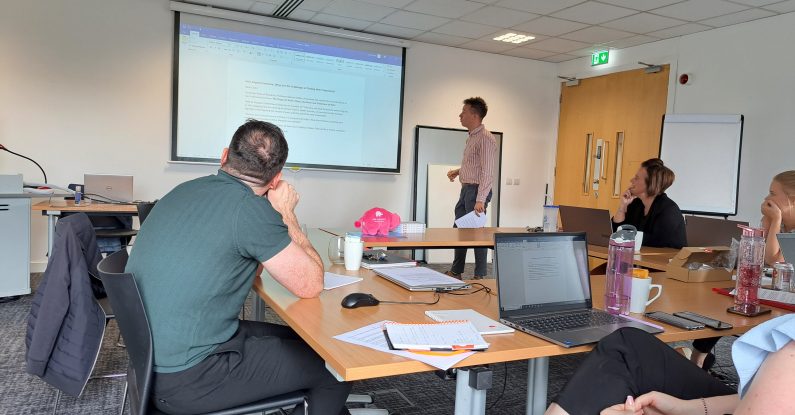
We’ve run more storytelling training courses this year than ever before.
Why?
I firmly believe it’s because people want their work to be more interesting.
We’re all speaking on Teams call each week.
Demonstrating our data.
Updating colleagues about ongoing projects.
Addressing in-person audiences once again.
So what role does storytelling play? And how do you get it right?
There are three steps to ensure you hit the mark each time.
Let’s get into them.
Can you wax lyrical in your storytelling at every executive board meeting?
Unlikely. That’s an audience that needs headline information, fast.
Can you tell stories on weekly catch-up calls and in monthly presentations?
Absolutely. In fact, we’d strongly encourage it.
Audiences love stories. Sometimes, though, business will trump entertainment.
Stories, if told to the right people at the right time, connect us.
We, the listeners or the viewers, engage. We empathise. We’re hooked.
But it’s got to be the right audience. That’s the first step.
Ask yourself: is this an appropriate group to tell a story to?
9 times out of 10, the answer will be yes.
The next step is key.
Your story must be relevant.
Explaining how you made last night’s carbonara will fall flat if there’s a lack of a business link.
But can you share how reading a bedtime story to your daughter reminded you of the importance of simplicity?
Yes. 100% yes.
These short stories and analogies are powerful.
But they must have a clear link to the audience.
Otherwise, you’re only entertaining yourself.
Ask yourself: what’s the link between my story and my business point?
Once you identify that, the crafting of the story becomes much easier.
You’ve got the perfect audience and a relevant story.
So what’s missing?
The perfect pace, tone and volume.
This is arguably the toughest part to get right.
In my experience, the better you know your story, the better the delivery.
So really get conversational with your story.
Figure out where silent pauses are need.
Identify where you can add real emphasis.
And work on the balance between glancing at your notes and making eye contact.
In summary? Practice, practice, practice.
Avoid over-writing the script. Practice the delivery more than anything.
If you successfully combine these three steps, you’re onto a winner.
If you’re looking for in-person practice, expert analysis and how to actually write your story, there’s one more step.
Email or call us to book your own storytelling training course.
We’d be thrilled to work with you.
Colin Stone is Communications Lead at Pink Elephant.
Read more about him here.
Photos in Storytelling training blog by Pink Elephant Communications.
Storytelling training blog written by Colin Stone.
Storytelling training blog edited by Andrew McFarlan.
26th October 2023 Featured in: Blog By: Pink Elephant
Some media trainers knock you down…and leave you down. Our media coaches show you how to deal with each knock…and still win through. So you have the presentation skills to perform – with confidence.